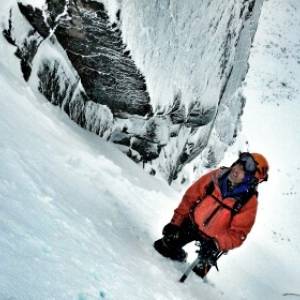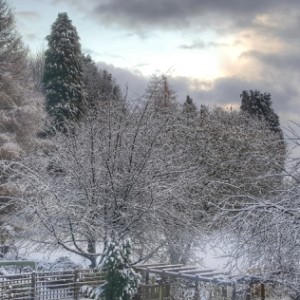22° Halo
We woke to the first real snowfall of this winter today - the wood looked wonderful with the autumn colours still peaking through the white (see extras, taken from bed) - so we had a lazy breakfast and then headed up onto the Scar - which was far more treacherous than we'd thought about - note to self, "you don't have a 4x4 anymore", thankfully though the snow tyres go on on Wednesday.
As we parked the sun was trying to break through the low cloud - heavy flurries gave us our own little white caps, but the sun slowly won through. From the Boundary Stone we stopped - all three of us with grins on our faces, and stared, the mixture of this fabulous ice crystal halo* and our fresh tracks in six inches of perfect powder snow - days don't start much better than this.
Until recently I'd have called this a sundog - and been wrong. Sun dogs are actually the bright refraction points that often go with this sort of halo ( there are a lot of different types of ice crystal halo), they are usually at left and right positions to the sun, along the same plane.
The 22° Halo is caused by the refraction of light through hexagonal ice crystals. It gains it's name as when light passes through the 60° apex angle of the hexagonal ice crystals it is deflected twice resulting in deviation angles ranging from 22° to 50°. The angle of minimum deviation is almost 22° (or more specifically 21.84° on average; 21.54° for red light and 22.37° for blue light). This wavelength-dependent variation in refraction causes the inner edge of the circle to be reddish while the outer edge is bluish. In this particular halo the pattern is repeated, I know not why.
And if you see similar in the rain - well that's a Corona.


Comments
Sign in or get an account to comment.


